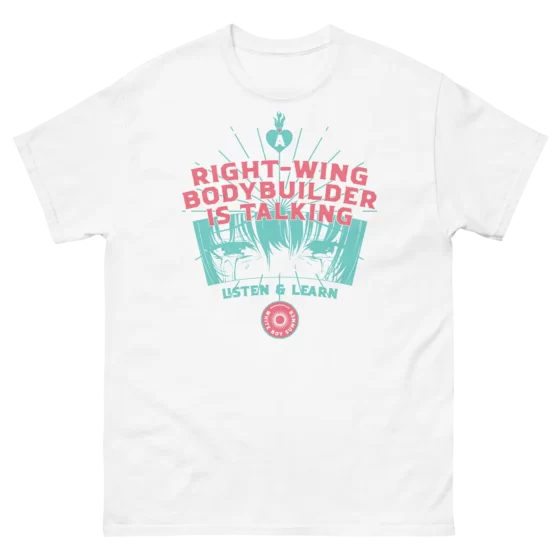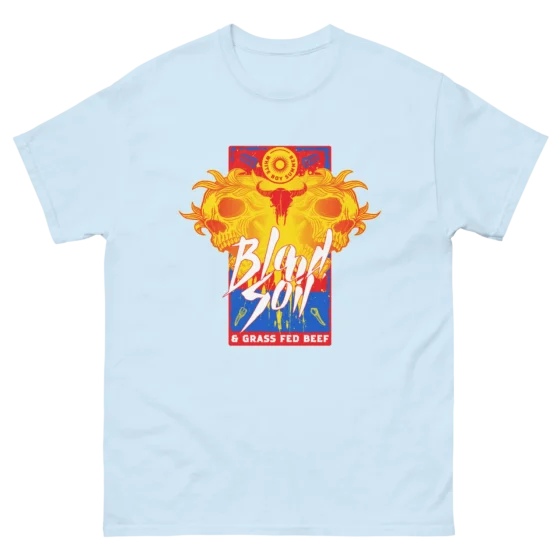Stop with the Shitty Writer’s Tropes Already
Hey, did you know Kerouac was an alcoholic? How cool and authentic, right? Hitting bottom. Gutter living. Fuck society. Bukowski, Kerouac, Ginsberg, Hemingway, Thompson, Miller: all couldn’t help but weave their little hobby-horse of drinking — or certain other activities — into not just their writing, but their entire persona. Keep in mind, all these people are considered great writers in one way or another, so maybe there’s something there as far as writing and drinking is concerned? Or maybe there’s not, because what other through-lines connect all of these men? More on that later.
Too many writers brag about drinking and wear it like a badge of honor, as if every other identity group on the planet (frat-bros, sailors, the Irish, etc.) aren’t also boasting about the same thing. The truth is, the drinking motif is just one of many tropes associated with being a writer, and it’s lame and needs to go away. It obviously won’t as long as we’re not in control of all forms of content creation, so, at a minimum, the right people need to distance themselves from it. I’m not saying “Don’t drink:” I’m saying stop vaunting it like a teenager collecting bottle caps at their first house party.
Examples abound. So accepted is the drinking writer motif, it appears in the chapter about publishing in Anne Lamott’s personal instructional guide to writing, Bird by Bird, when she speaks of the nervousness of awaiting reviews: “Possibly you’re still drinking, so you have a pitcher of martinis just to take the edge off, or you’ve quit drinking, so you eat your body weight in pastries and Mexican food.” The idea of “still drinking” or having passed through a phase of drinking is presupposed, intentional or not, as a sine qua non. There’s also an entire book written on the subject, Olivia Laing’s The Trip to Echo Spring: Why Writers Drink. In an interview with The Paris Review, notorious alcoholic writer Tennessee Williams speaks of the playwright Eugene O’Neil and makes the boastful claim, “O’Neill had a terrible problem with alcohol. Most writers do. American writers nearly all have problems with alcohol [my emphasis] because there’s a great deal of tension involved in writing, you know that. And it’s all right up to a certain age, and then you begin to need a little nervous support that you get from drinking.”
As already stated, this wannabe alcoholic glorification is just one of many clichés, and the best way to identify others is to take note any time the writer-character is depicted in mainstream content. My personal favorite are movies about authors. They’re always showing some modern man of letters dropping off a hard-copy manuscript, as if email hasn’t existed for thirty years, and the ever-present usage of the typewriter or, sometimes, actually writing with pen and paper. This isn’t to say that notebooks and ink don’t still have their place but no one is penning an entire text with them. Sure, there are practical reasons for these portrayals: no one wants to watch a film with a guy sitting in front of a laptop for three hours, but that doesn’t stop them from inducing a bit of a wince. Paul Dano’s character commits every one of these faux pas in Ruby Sparks, a movie about a writer physically manifesting his fictional dream-girl protagonist with his typewriter. Emma Roberts does something similar in Adult World. She’s even shown asking her father for “stamp money” to send enveloped submissions to The New Yorker, The Atlantic, The Paris Review…
Writer-as-protagonist stories also frequently make us believe there’s actually some type of literary “scene.” It’s almost always in New York or Los Angeles, or, if pre-WWII, Paris. Authors, agents, and publishers all hob-knobbing at some common ground watering hole, or maybe at a book release party or press junket. Compare this to the graveyards of most Big-5 book release readings we see happening today. The portrayal of modern mainstream publishing often attempts to maintain the credibility of these expended institutions. When Bukowski’s 1975 novel Factotem was adapted for the screen as an indie film in 2005 and set in the present day (2024), the film still fancies that a counter-cultural/anti-society type can find meaning by getting published in… The New Yorker. Of course, like the author, the protagonist is shit-faced the entire time as well.
Maybe the most detrimental faux pas, however, is the ostensible requirement to go somewhere to write. It’s usually shown as an isolated place, but anywhere other than where the writer currently resides is acceptable. Again, there’s truth and practicality to this; anyone that partakes in the creative process needs time alone, but incessant focus on the conditions of writing as opposed to the outcome produce some pretty humorous results.
Big Sur is the geographical manifestation of the writer’s secluded destination. It’s represented so much in the literary world, especially in circles that were once outside the Overton Window (or so we’re told). Henry Miller, whose work was once banned in the United States, occupied a refurbished workman’s shack beside the Pacific Coast Highway in the region for years. His memory and body of work is now enshrined close by at the Henry Miller Memorial Library — an eponymous gift shop. After fame and national prominence, Jack Kerouac used this same stretch of coast as a retreat from all the publicity and attention he loved to hate and vice versa; today, throngs of young ones with a severe case of self-diagnosed #wanderlust — On the Road in hand — patrol this littoral in rented, restored VW vans and post daily updates accompanied with borderline professional photography to their “Van Life” blogs. Buttressing the northern end of this mountain range is Carmel-by-the-Sea, a once humble artist’s colony for creatives with no more than pennies in their pockets. Now, a “fixer-upper” home there lies somewhere north of one million dollars and the town is overrun with gray-haired women shoppers adorned in thousand-dollar boho-chic outfits. Before one even enters Big Sur proper from its southern approach, there lies the most decadent and palatial of literary landmarks — the Hearst Castle. Though not necessarily a counter-cultural figure, Willam Randolph Hearst was a one-of-a-kind in the world of publishing and his notorious manipulation of public opinion serves as an eerie prelude to the influence his above-mentioned northern neighbors would exert in succeeding decades. And then there’s that photo, the shirtless one of Hunter S. Thompson when he still had hair on his head, seated atop the bluffs of Big Sur, clanging away on his typewriter and smoking a pipe. There’s even a tin coffee pot visible on the table. I dread to think how many mood boards this image has graced.
Here lies the through-line that connects so many of these great writers with the now-common associations of a writing life: consistent romanticization of debauchery and decadence. Certainly not all writers who have been known to drink fit this bill, but the theme persists. Though I admit to enjoying Miller’s prose, the content of his work makes me feel like he was just an asshole born before it was cool to be an asshole. Kerouac seemed to find his niche in venerating the act of treating your friends like shit. And for Thompson (again, a great writer no doubt), we already know he would become the poster-child of the drug-fueled eccentric, regardless of his occasional stray from modern orthodoxy.
These tropes are de facto low, and any defense of them inevitably comes off as a sort of “just let people enjoy things” screech. I get why they exist, it’s easy to write downward, appealing to humanity’s most base senses, but we should strive upwards, especially if you’re looking for a real counter-culture. If the source and process of writing means so much to so many people, then isn’t it possible that living a good life could lead to good writing? Why is heroin tourism apparently more of a modern authenticity prerequisite than sitting down to a nightly family dinner?
The addict trope might be just as bad as its alcoholic counterpart. Jordan Castro’s The Novelist makes light of this. After the protagonist procrastinates with, amongst much else, musing over the similarities of his heroin usage to drinking tea, he eventually concludes that he hates his own work, something referred to as “drug literature.” He goes on to say, “every book about drugs was inherently less interesting than every book that was not about drugs.” In addition, David Lipsky’s Although of Course You End Up Becoming Yourself: A Road Trip with David Foster Wallace and James Ponsoldt’s screen adaptation The End of the Tour portray Wallace’s concerted effort to distance himself from the chic heroin addict motif so common of the era — something he probably brought upon himself by doing so much heroin.
Sadly, many of these trappings aren’t linked just with writing, but being creative in general. Artists are weird, aren’t they? Not necessarily. Andrew Wyeth, famous painter of Christina’s World, completed most of his work in a modest home studio in Pennsylvania and a summer home in Maine. So capital-N Normal (read “accessible”) was Wyeth that he needed to keep a sign on his studio door stating he did not sign autographs since any American could simply park on the road and waltz to his studio and knock on the door to say hello. Juxtapose this process and masterpiece end-result with that of Andy Warhol and the goofball antics associated with his factory studio. Preference aside, one output of work seems to be objectively better than the other. This comparison isn’t made to suggest that cliques of artists are bad and that every true creator needs to live some dull life. Scenes are important (as much as everyone in one is afraid to admit), they just don’t have to be like every other scene that came before.
In The Writer in America, Van Wyck Brooks quotes British socialist and Fabian Society leader Graham Wallas’ frequent complaint (circa 1920s), “Why not a group movement among the young intellectuals inspired by sobriety, hard work and cheerfulness?” Why not indeed?
Unfortunately, being creative puts you in the general orbit of the galaxy of cliché artists and their “eccentricities.” The good news is that they’re fairly easy to avoid. You’re allowed to be a good writer without being an alcoholic, you don’t need to be a liberal faggot to be a comedian, drug use isn’t a prerequisite to originality, and there’s nothing preventing an actor or painter from living a normal family life as opposed to some hedonistic weirdo existence. This isn’t a purity spiral, it’s just a bland observation; not all that unlike the one whined about by Wallas in the pre-war years — creatives have drifted left for so long because they’ve been encouraged and coerced to do so.
You can still write and be artistic while rising above the morass of depravity. In fact, one could argue that the stifling conformity of the crybaby theater kid world is motivation for a truly non-conformist life of creativity, like a guerrilla force growing stronger in the bracing air of some mountain fastness. Have a glass of milk with dinner, go to a party and talk to someone new without being inebriated, get married in the church instead of on a golf course by your friend who got ordained by the internet, have children and be inspired by them. Be Normal yet aware. Read the room. You can do all of this and still be a writer or artist, free from a lifestyle engineered for your demise.
































